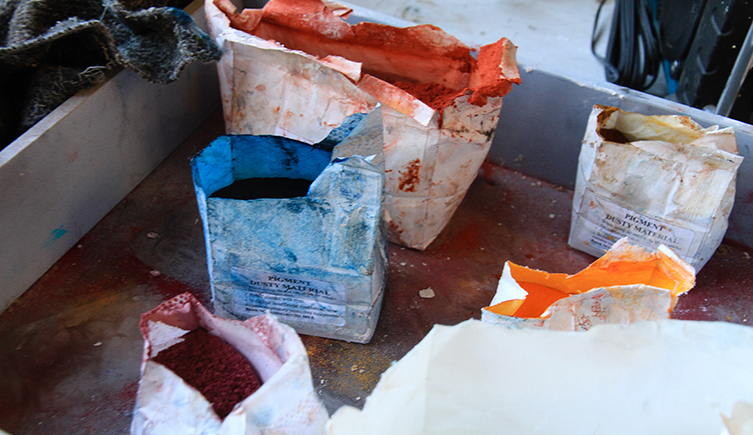Create a list of articles to read later. You will be able to access your list from any article in Discover.
You don't have any saved articles.

Artist Ivan Morison's sculptures
Meet the artist behind the whale-form sculptures in the exhibition Whales: Beneath the surface.
1 March 2018 update: The exhibition is now closed. Find out about our current exhibitions and displays.
British sculptor Ivan Morison and his team spent five months creating two sculptural pieces exploring our connection to cetaceans (whales and dolphins).
The colourful, swirling forms were painstakingly made using an ancient technique called scagliola (pronounced 'scal-yo-lah'), which uses plasterwork to imitate marble and other hard stones.
From sketchbook to exhibition, Ivan takes us through creating the two tactile whale forms he produced for the exhibition.

The sculptures in the exhibition
Ivan drew inspiration from the Museum's archives and extensive collection of cetacean specimens. He also accompanied Museum staff to whale strandings and became interested in beachings as a meaningful point of contact between cetaceans and humans.

Early sketches and models for the sculptures were inspired by Museum collections and whale strandings
'I feel very privileged to have been able to work with the Natural History Museum collections and speak with scientists about their work,' Ivan said.
'On a trip to Dorset, seeing the scale and the form of a stranded fin whale was a very powerful experience.
'It was so visceral - the whale had been dead for some time but it still had this incredible sense of presence to it - which is what we hoped to capture in the commission for the exhibition.'
While the smooth, gently curving forms may appear simple, the swirling colourful surface is the result of a highly technical and labour-intensive process.
The first step was to build a steel armature as a solid base for the sculpture. Flowing organic shapes were then created using polyurethane foam, which expands as soon as moisture is added.
'You are slightly at the mercy of the material for this part,' Ivan quipped. 'You only have about 20 seconds while the foam expands, so you have to work quickly.'

Polyurethane foam rapidly expands to 25 times its size
'Sometimes it creates really beautiful forms with natural ripples where the foam expands and in other places it needed to be sculpted back.'
The visible surface of the sculpture was made from a process called scagliola, a seventeenth-century Italian technique that uses gypsum and pigments to create surfaces that are almost indistinguishable from marble.

Sections of plaster and pigment are hand-worked, making every batch slightly different
'Scagliola was often used for the columns and fireplaces of Georgian houses, and there are plenty of excellent examples in the historic homes and public buildings around London,' Ivan says.
'Today scagliola is a bit of a lost art, which is part of the reason I was interested in reviving it in my practice. It's very hands-on and quite an exciting process.'
'Plaster, pigments and glue are worked into a dough-like consistency and are then layered and rolled to achieve almost an infinite number of different patterns and effects.'
'That part of the process is very messy. You have to work quickly so that sections don't dry out.'

Wet scagliola must be worked by hand to create the desired shape

Fine-grit sandpapers were used to achieve a marble-like finish

Colourful pigments were worked into gypsum and glue
Ivan chose a mixture of natural and oxide pigments for his work, including ultramarine, raw umber, cadmium yellow, Phthalo turquoise, Venetian red, yellow ochre, ivory black and indigo.
Visitors to the exhibition will be invited to touch and interact with the sculptures.
'When strandings happen there seems to be a moment when humans and whales come together and it's a place where connections and empathy can form,' Ivan says.
'Although in these situations when the whale is out of its natural element, people do seem to make a close connection. So these sculptures are designed to feel like they are out of their element in our world and hopefully will enable people to find that connection.'